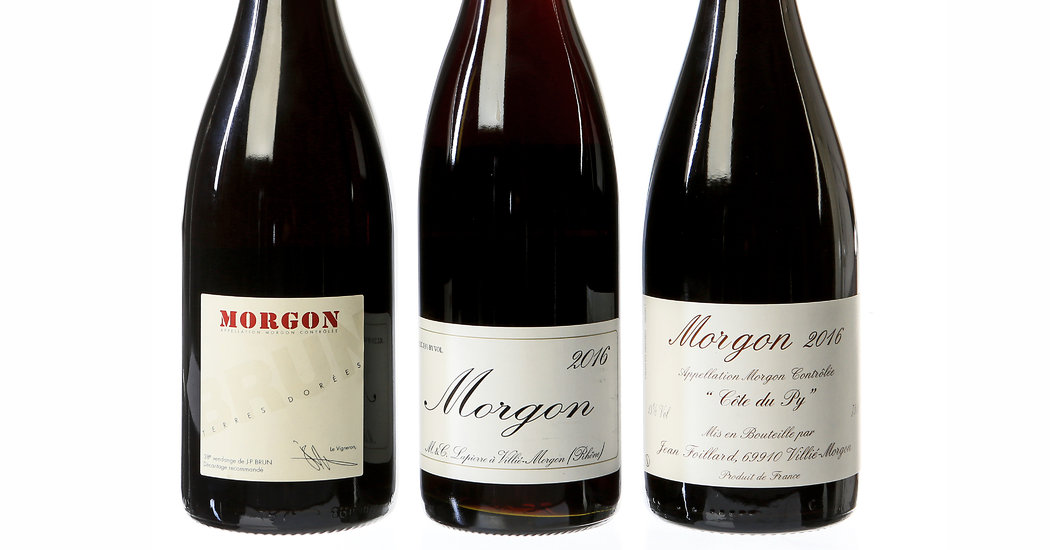
Of the many exciting developments in American wine, one of the most interesting for me is the arrival of good gamays, primarily in Oregon and California.
It would be wonderful to survey some of these wines, but sadly there simply are not enough to go around. I have gamay on the brain, though, and as it is the grape of Beaujolais, I thought it would be interesting to take an in-depth look at Morgon, one of the best and most widely available of the best Beaujolais areas, or crus.
Way back near the beginning of Wine School in 2014, we took a somewhat generalized look at Beaujolais. This time, we will be more focused.
Beaujolais has a modest hierarchy for ranking the potential quality of its wines. At the base is plain Beaujolais, which can come from anywhere in the region. One step up is Beaujolais-Villages, from areas with theoretically more potential. And at the top are 10 villages thought to offer distinctive enough terroirs to warrant using their names as appellations.
In addition to Morgon, they include Brouilly, Chénas, Chiroubles, Côte de Brouilly, Fleurie, Juliénas, Moulin-à-Vent, Régnié and St.-Amour. We could have examined any of them, but Morgon seems to have more producers distributed more widely than the others.
I would like to focus on the 2016 vintage, which is considered a classically styled year. The 2016s are not as ripe and powerful, for example, as the 2015s, and more approachable. At the same time, Beaujolais suffered hail damage in 2016, so if you can’t find these Morgons, better by all means to get another year than to sit it out.
Here are the three bottles I recommend:
Jean Paul Brun Domaine des Terres Dorées Morgon 2016 (Louis/Dressner Selections, New York) $23
Jean Foillard Morgon Côte du Py 2016 (Kermit Lynch Wine Merchant, Berkeley, Calif.) $35
M. & C. Lapierre Morgon 2016 (Kermit Lynch Wine Merchant) $30
If you can’t find these precise bottles, you should have many other options. Mr. Foillard makes other Morgon cuvées, as does Mr. Brun. Other names to look for include Jean-Marc Burgaud, Guy Breton, Damien Coquelet, Daniel Bouland, Domaine Ruet, Georges Descombes, Julien Sunier, Louis-Claude Desvignes, Jean-Paul Thevenet and Antoine Sunier. And I’m sure you can find more.
While Beaujolais has a reputation for easygoing, jolly wines, these bottles deserve care and attention. The wines should be served cool (but not cold), and in generous glasses, if available, so they can breathe and evolve. But if all you have are juice glasses, they will not kill the wine.
Beaujolais is thought to be versatile with food. My advice: Think of classic bistro dishes — roast chicken, hanger steak and the like. Straightforward flavors will go well with these wines. Then again, if you are the adventurous sort, explore away.
Follow NYT Food on Twitter and NYT Cooking on Instagram, Facebook and Pinterest. Get regular updates from NYT Cooking, with recipe suggestions, cooking tips and shopping advice.



